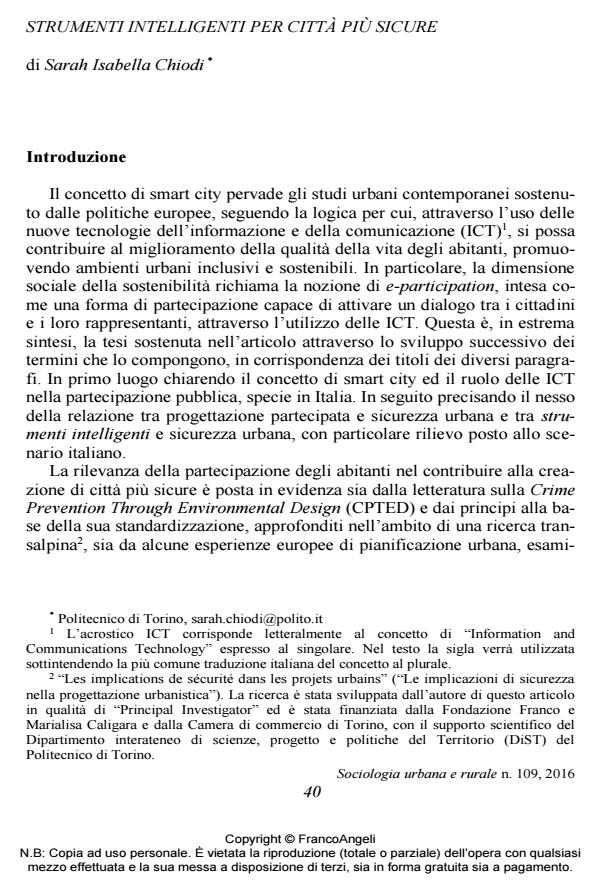Smart Tools for Safer Cities
Journal title SOCIOLOGIA URBANA E RURALE
Author/s Sara Isabella Chiodi
Publishing Year 2016 Issue 2016/109
Language Italian Pages 21 P. 40-60 File size 557 KB
DOI 10.3280/SUR2016-109004
DOI is like a bar code for intellectual property: to have more infomation
click here
Below, you can see the article first page
If you want to buy this article in PDF format, you can do it, following the instructions to buy download credits

FrancoAngeli is member of Publishers International Linking Association, Inc (PILA), a not-for-profit association which run the CrossRef service enabling links to and from online scholarly content.
Whether the literature and the European standard on Crime Prevention Through Environmental Design (CPTED) or some European experiences of urban planning, point out that community participation in urban planning contributes to make safer cities. Agreed that e-participation enhances community participation through the use of new technologies, therefore smart tools can improve inhabitants’ inclusion within urban planning, contributing to urban safety and following the development of smart cities. A transalpine research and the Cost Action TU1203 are the main sources behind the supported theory, not without critical issues.
Keywords: Smart City, E-participation, Crime Prevention Through Environmental Design (CPTED), Urban Safety, Urban Planning, Smart Tools
Sara Isabella Chiodi, Strumenti intelligenti per città più sicure in "SOCIOLOGIA URBANA E RURALE" 109/2016, pp 40-60, DOI: 10.3280/SUR2016-109004